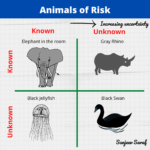Battery Failure Modes Leading to Fire
Here are a couple of battery failure modes that may lead to high temperatures and may result in a battery fire.
- Manufacturing defect: Manufacturing defects can result in a “hole” in the separating membrane leading to a short-circuit. Metal particle impurities in the polymer matrix can also contribute to excessive heat generation. A good quality control (QC) program at the battery manufacturing plant will ensure absence of defects. A quality check on the separator technology is critical for preventing leaks and therefore, techniques used to verify the consistency of the electrolyte separator are critical to prevent a short-circuit.
- Progressive wear: As a result of charging-discharging, a lithium battery can form dendrites. Dendrites are finger-like protrusions formed by accumulation of lithium metal. Over a period of time these dendrites can grow to touch the other electrode resulting in a short-circuit, heat generation, and a fire. More commonly in lithium batteries is formation of small dendrites leading to localized hot-spots and a reduction in cycling efficiency of the battery but not a fire.
A Failure Modes and Effects Analysis (FMEA) of the battery manufacturing process will help identify the systems in place to identify and eliminate manufacturing defects. For example, a FMEA will identify the failure modes that will lead to battery fires and efficiency of existing system in detecting these failure modes.
In order to minimize fire occurrences, the recommendations from FMEA must be carefully integrated into the quality control (QC)program during manufacturing.



